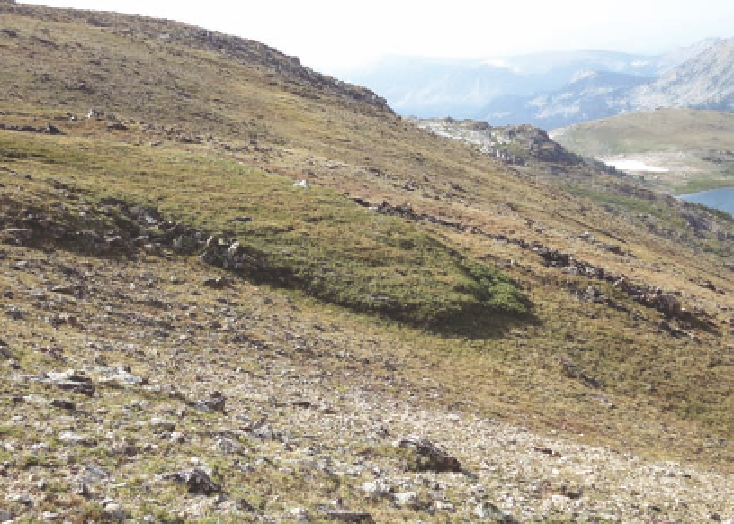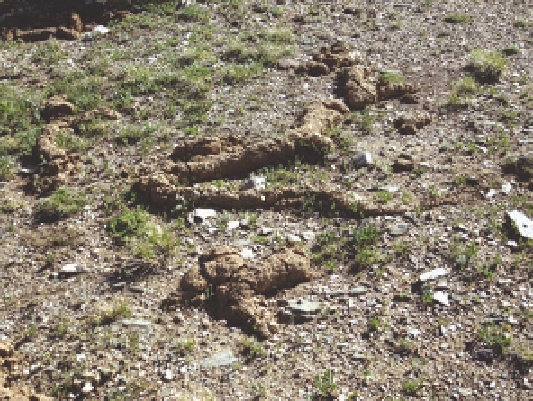Geoscience Reference
In-Depth Information
Fig. 14.11. Solifluction lobes or terraces
develop over a fellfield on slopes in
alpine tundra, such as in this area in
the Beartooth Mountains. Solifluction
creates different environments for plant
growth over short distances. Water
seeping through the lobes provides an
ideal environment for barrenground
willow. elevation about 10,600 feet. See
Johnson and Billings (1962).
Limiting nutrients tend to be conserved in plant and
microbial biomass and will not normally be leached or
lost from the soil except after disturbances.
37
it was unusual, then, when investigators observed
high concentrations of nitrogen in the creeks drain-
ing the alpine zone of Rocky Mountain national Park
ous disturbances were evident, but further research led
to the conclusion that the addition of nitrogen in air
pollutants, mainly nitrous oxides, was causing a con-
dition known as
nitrogen saturation,
when the amount
of nitrogen added to the ecosystem is essentially the
as
eutrophication,
leads to changes on the upland and,
downstream, enables algal blooms that can reduce fish
notably, the added nitrogen apparently is first
deposited at high elevations in the tundra.
41
Referred
to as
nitrogen hotspots,
such areas have large amounts
of bare rock and a small amount of biomass for nitro-
gen uptake. Moreover, much of the nitrogen is added in
snowfall that is blown into drifts, thereby concentrat-
ing the nitrogen in places that have the least amount of
plant growth and storage capacity. in contrast, the sub-
alpine forest and many subalpine meadows have higher
nitrogen-storage capacities and currently are less of a
nutrient source. one study concluded that the eutro-
phication of Rocky Mountain aquatic ecosystems from
atmospheric pollutants is analogous to the acidification
of terrestrial ecosystems associated with the same pol-
lutants in northeastern north America.
42
Fig. 14.12. Pocket gophers, though rarely seen, are common
in alpine tundra and subalpine meadows and often burrow in
the soil under snowdrifts, where they eat roots. the soil from
their burrows is pushed into tunnels through the snow, which
become middens when the snow melts. these small mammals
aerate the soil and facilitate nutrient cycling. the plants in
this area are sparse, because snow cover persists until early
July.


Search WWH ::

Custom Search